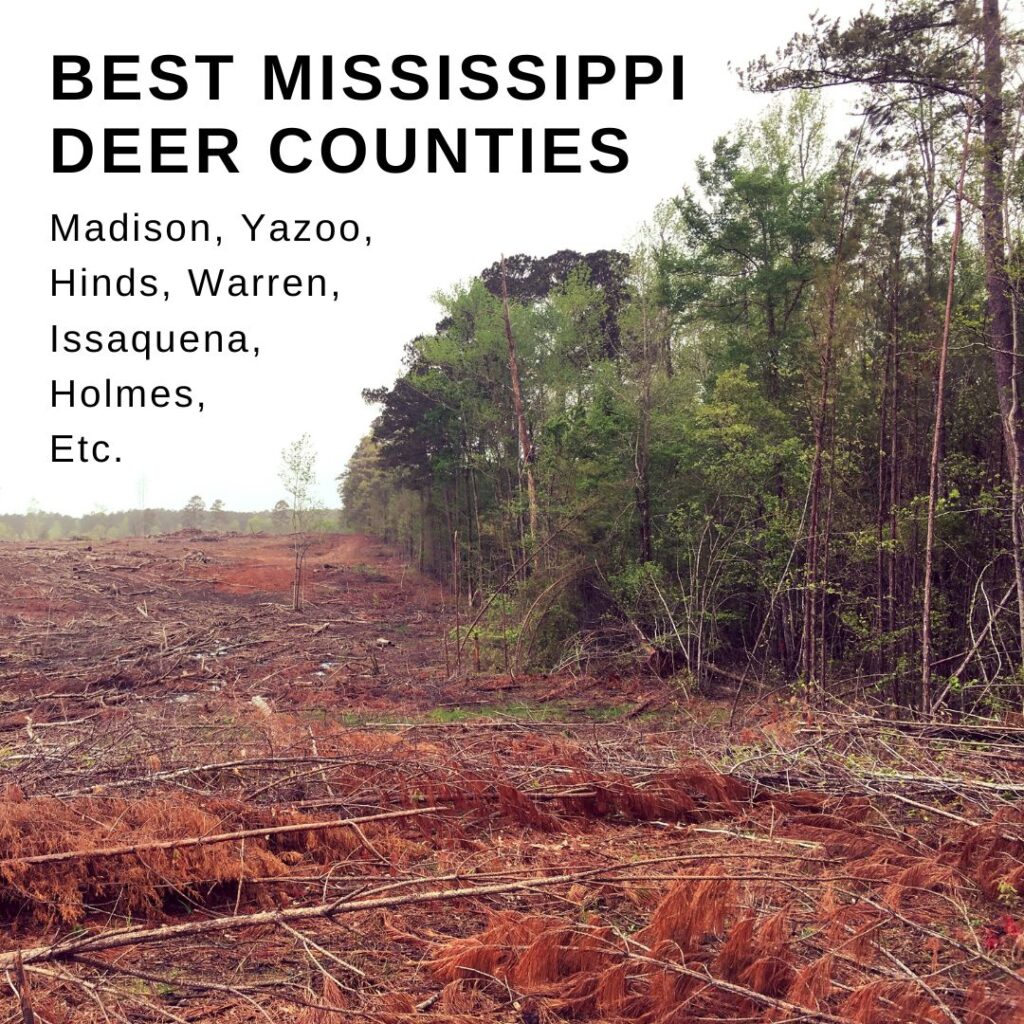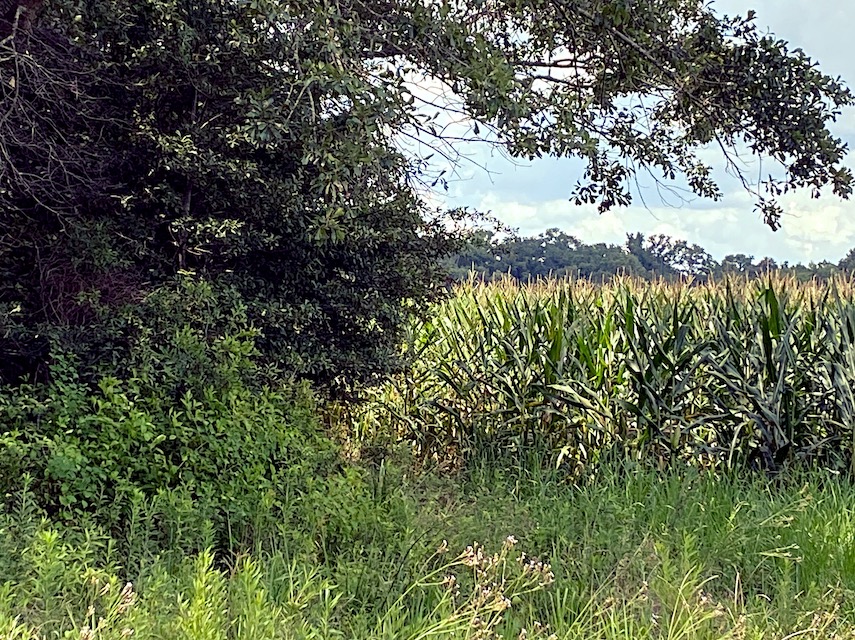Whether you like it or hate it, chasing deer with hounds is an American pastime. Perhaps it’s a dying sport, but it’s one I’ve had quite a bit of experience with, albeit a while ago. Below are my thoughts about dog hunting for deer, and how it’s usually done. If you’d like to give it a try, the best option is to join an existing deer camp that allows dog running.
What Is “Dog Hunting” For Deer?
In its most basic form, dog hunting for deer consists of a “dog man”, who walks his hound(s) into a promising area. He lets the dogs smell around until they pick up a deer’s trail. Pre-positioned “standers” wait in known deer crossing areas in hopes of getting a shot at an escaping deer.
How To Ambush Fleeing Deer
With some experience on a particular piece of property, you can get an idea of common escape routes. That’s where you’ll want to focus the efforts of your standers.
When you’re on a new piece of property, any drainages are good ambush points, as well as are any open pockets within thicker areas. Standers need to position themselves where they can actually see enough to get off a shot. Ideally standers would be in pre-arranged positions for safety reasons. It would be even more ideal if those pre-arranged stand locations were elevated for a clear view of the surroundings, as well as for keeping the stander above the line of fire.
Beagles Vs Larger Hounds For Deer Hunting
Man, I love all kinds of deer dogs. I once knew a guy that had a great pack of deer dogs, but not a breed you may imagine. He used a small pack of Border Collies! The point is, that many breeds and mixes of breeds can suffice as a deer dog, if trained properly. However, most dog hunters I’ve been around choose either beagles, Walker hounds, or Black and Tan Coonhounds.
Large Coonhounds Are Impressive
Walker hounds, and Black and Tan Coonhounds are some of the best dogs you can get for chasing deer. Treeing Walkers, in particular, push deer hard and fast. This usually gets deer up, and out of an area to where you can see them. Larger coonhound dogs are more likely to push deer out of a thicket, rather than around in circles within it.
Something you’ll never forget, is a large group of big hounds hot on a deer trail in a low lying bottom. It’s so loud and impressive! I always felt like deer hunting with large coonhounds was a more aggressive and more exciting hunting tactic than with using beagles.
Beagles Are The Best Deer Hunting Dogs
In my opinion, a good pack of beagles is the superior choice for deer chasing these days.
- Their compact size is easier to handle
- Cheaper to feed
- Beagles push deer slower
- Beagles are easier to cut off
- They make great pets
The most obvious advantage of a beagle is its compact size. It’s far cheaper to feed a pack of beagles than it is a pack of large Walker hounds. They’re also easier to transport and handle.
Beagles don’t tend to push deer as far and as fast as other larger breeds of hounds do. This is helpful when hunting smaller tracts of land. It’s also helpful in a day and age where more and more neighbors hate dogs crossing onto their property. The more you can prevent your dogs from escaping your property the better, and with beagles that is easier to do.
Beagles are great dogs in general, and can double as awesome family pets.
How Deer Escape Dog Chases
Deer are smart, especially older ones. I have seen bucks swim up creeks to lose a dogs nose. I have seen deer double back on their own trail to confuse their pursuers. Sometimes they will even swim across sizable rivers.
Deer have all sorts of ways to outsmart a hound’s nose. I am even convinced that mature bucks, being trailed by dogs, sometimes run around in large circles until they find another deer’s trail to throw the dogs nose onto. There are often instances of a buck being chased into a thicket, only to have a doe being chased out of it.
Shotguns vs. Rifles For Dog Hunting
For safety reasons, shotguns with buckshot can be a great choice for dog hunting, as shot doesn’t carry nearly as far. However, I never liked using shotguns for deer hunting. After missing a few deer with buckshot as a young hunter, I fell out of love with it. Instead, I am extremely careful, but much prefer a rifle, due to its efficient put down capabilities. If I don’t feel like I can make a clean and safe shot, I let the deer keep on running. You should never take a questionable shot.
Dog Hunters And Trespassing
A very common complaint against dog hunters is with trespassing. The old adage of “my dog can’t read trespassing signs” often wears thin with neighbors. Trespassing is a legitimate issue, no doubt.
There are 2 good ways to minimize trespassing complaints and be a good neighbor. First, you should only dog hunt very large areas of land. You should also use tracking collars on your deer hounds. These two things will help you cut your dogs off before they can pass over onto someone else’s property.
How To Find A Dog Running Deer Camp To Join
Where I’m from (Mississippi), there are plenty of dog running deer camps around. Most of them have a lot of acreage, and a lot of members.
Aside from the very best clubs, many dog camps are commonly looking for new members. That’s because all that acreage comes at a very high lease price. They need members to pay those lease dues.
Every year, at least some members tend to drop out of dog camps. So, there tends to be membership slots opening up each year. Even if members don’t drop out, the lease prices tend to go up occasionally, so they need more members to pay it.
For really good deer camps that allow dogs, you’ll have to join a waiting list, and wait potentially multiple years before joining. It can often be worth the wait, as once you’re in, you’re in.
There are many ways to go about finding a hunting club to join. The best one is to befriend someone already in one. That’s not possible for everyone. Another great way to find a club is to drive around and locate promising clubs in your area, then approach some of the members in person, and talk to them. Another way that has worked for me in the past is to reach out to members online, and simply ask if they are looking for members.
Do Dog Hunters Kill Smaller Bucks?
From my experience, dog hunters in general, do kill smaller bucks. The dog camps I’ve been in and around, were as much social clubs as they were hunting clubs. That’s not necessarily a bad thing!
Typically, true dog hunters seem to thoroughly enjoy the camaraderie of hunting together with their fellow man in a more active manner, such as with the involvement of man’s best friend.
There tends to be lots of standing around, and talking about where the dogs ran that morning, and what folks saw. And there is also time spent searching for the dogs.
I never found that dog deer camps were usually “trophy clubs”. I always had much more consistent luck in “still hunting” only camps. Now, with that said, I have visited a dog camp before that did consistently kill nice bucks. But, that was an exception to the rule.
If big mature bucks are what you’re after, I would seek out an area of the state with fewer dog hunters. However, if lots of camaraderie with fellow hunters and not taking things too seriously is more your cup of tea, try a dog camp.
4 Negatives Of Hunting Deer With Dogs
I don’t personally have a problem with dog hunters. In fact, I have many family members that enjoy the sport each season. However, there are a few things I don’t prefer about it.
1. Dog hunting can be dangerous
In a properly run dog camp, standers will be required to sit in elevated stands, or at least on high ground, and stay put until the hunt is over. That’s because otherwise you potentially have bullets flying around at eye level. But even then, there is often still a dog man out there “somewhere” to be mindful of. I’m not saying dog hunting can’t be done in a safe manner, because it can. I have just seen it done otherwise, more often than I prefer.
2. Unethical shot selection
Another negative of a dog hunt is the likelihood of unethical running “pop shots” on deer. I hunted with many deer hunters that do not take unethical shots. But, the urge is strong when a large buck is running across a camp road at top speed.
3. Mistakes are made
Some of the most restrained hunters I’ve known have made “mistakes” when dog hunting. Meaning, they accidentally shot a small deer, when they were fully convinced it was bigger. That is the nature of the game – quick decisions. Unfortunately, sometimes fast decisions open you up to more mistakes.
4. Nocturnal bucks
In my opinion, hunting with deer dogs sort of creates a feedback loop, if that’s the right phrase. On a positive note, you are able to force some bucks to move during daylight, when perhaps otherwise they wouldn’t. However, the more you use dogs, it seems like the more nocturnal you make those bucks. So, in the end, much of the daylight buck activity you’ll see will have to be forced by a dog.
States Where Dog Hunting Is Legal For Deer
As it continues to fall from favor, chasing deer with dogs is now confined to just a handful of Southern states.
I found the write up, linked below, very informative. It discusses varying laws between the states where it is legal. Mississippi is not listed in the write up, but I assure you dog hunting is very legal and very common here. The Legality Of Deer-Dog Hunting In The South.
Conclusion
I have some very memorable pastimes of starting my deer hunting journey with dog hunting. It’s not my cup of tea anymore, but a really good dog hunt is very thrilling.
If you decide to give it a try, there are usually dog running deer camps willing to let you in, as they usually have lots of members. For a beginner dog hunter, that’s your best route to take – join an existing club. Dog hunting requires a tremendous number of acres, and very skilled coordination to do it right.
If you enjoyed this post, perhaps you would be interested in How Many Acres Are Needed Per Deer Hunter.
Be safe out there,
Augustus Clay




